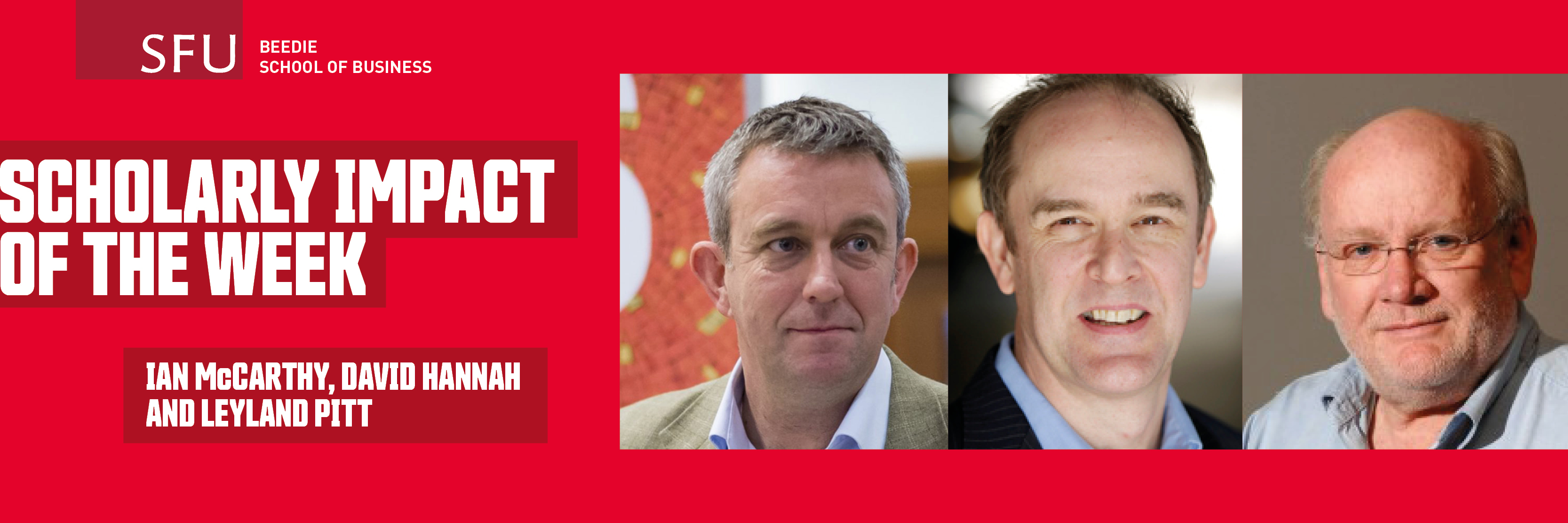
Some organizational cultures are frustratingly flowing with dubious claims, trendy jargon and misrepresentation. These are all examples of what Ian McCarthy refers to as “workplace bullshit.”
McCarthy is the W.J. VanDusen Professor of Innovation and Operations Management at SFU’s Beedie School of Business. His research and teaching focus on operations management, change and innovation management, and social media.
In 2020, along with SFU researchers David Hannah, Leyland Pitt and Jane McCarthy from Langara College, he published Confronting indifference toward truth: Dealing with workplace bullshit. Their article explains that “bullshitting” is not the same as lying. A liar must know the truth to lie, while a bullshitter is not concerned with the truth. This freedom from truth means bullshitters can be more harming than those who lie, because they say whatever it takes to further their agenda.
Not all bullshit (BS) is bad says McCarthy. There are lots of situations where the distinction between truth and lies does not have to be spelled out. For example, social banter—which involves a lot of BS—can strengthen bonds between friends, or when leaders and entrepreneurs try to articulate their vision of the unknown future.
However, for the most part when it comes to workplaces, if something smells off, it could signal an organization in trouble. McCarthy’s article discusses the C.R.A.P framework of how to effectively Comprehend, Recognize, Act against and Prevent the impact of BS in the workplace.
We asked Ian McCarthy to discuss his article.
Of all the places that BS occurs, what made you want to study it in the workplace in particular?
Bullshit flows in most walks of life, especially in politics and the media, but my domain of expertise focuses on the management of organizations. In this context, I would observe that people would often make untrue and sometimes bizarre claims not supported by logic or evidence. This prompted me to wonder why such misrepresentation happens so much, its impacts and what we could do about it. An initial revelation for me was to learn that such misrepresentation was most likely not acts of lying. It was more likely to be BS. This is an important distinction.
What are some examples of the types of BS found in the workplace?
There are two types of workplace BS that are Machiavellian in nature. Persuasive bullshitting is to impress or persuade. When someone is asked to advise on an important question, but they do not have a good answer to it, rather than say, “I don’t know,” they make up the best response they can. Evasive bullshitting is done to avoid getting caught for doing something wrong. Then there is well-intentioned envision bullshitting where leaders articulate inspiring futuristic ideas without reasonable certainty of what will happen. Furthermore, there is social bullshitting, which can include teasing, exaggerating, joking and trolling antics during work.
How is the use of BS detrimental to an organization?
Workplace BS is likely harmful in how it negatively impacts trust, the culture and decision-making effectiveness in organizations. An organization flowing in it is prone to be dangerously over-optimistic with deluded solidarity for decisions and actions that are based on hunches and whims, as opposed to critical thinking, logic and evidence. Consequently, when claims that are too good to be true are made, there will be few who feel empowered or safe enough to challenge them.
How can we deal with BS in the workplace?
We propose the four-step C.R.A.P. framework. First is comprehension to know that BS is different from lying and other forms of misrepresentation. Then recognizing that BS often masquerades as statements that are abstract in nature, lacking sources and logic, while being riddled with acronyms and jargon. Third, is acting to support employees to call out the BS. If this support is lacking, some employees become loyal to and accept the BS, while others keep quiet and disengage, and some exit the organization to escape it. The final step, prevention, encourages employees to ask for logic and evidence, while rejecting anecdotes and to be alert to inconsistencies, biases and vague and jargon-filled statements.
For more, watch the video overview, read the article in The Conversation Canada and check out McCarthy’s blog, It Depends.